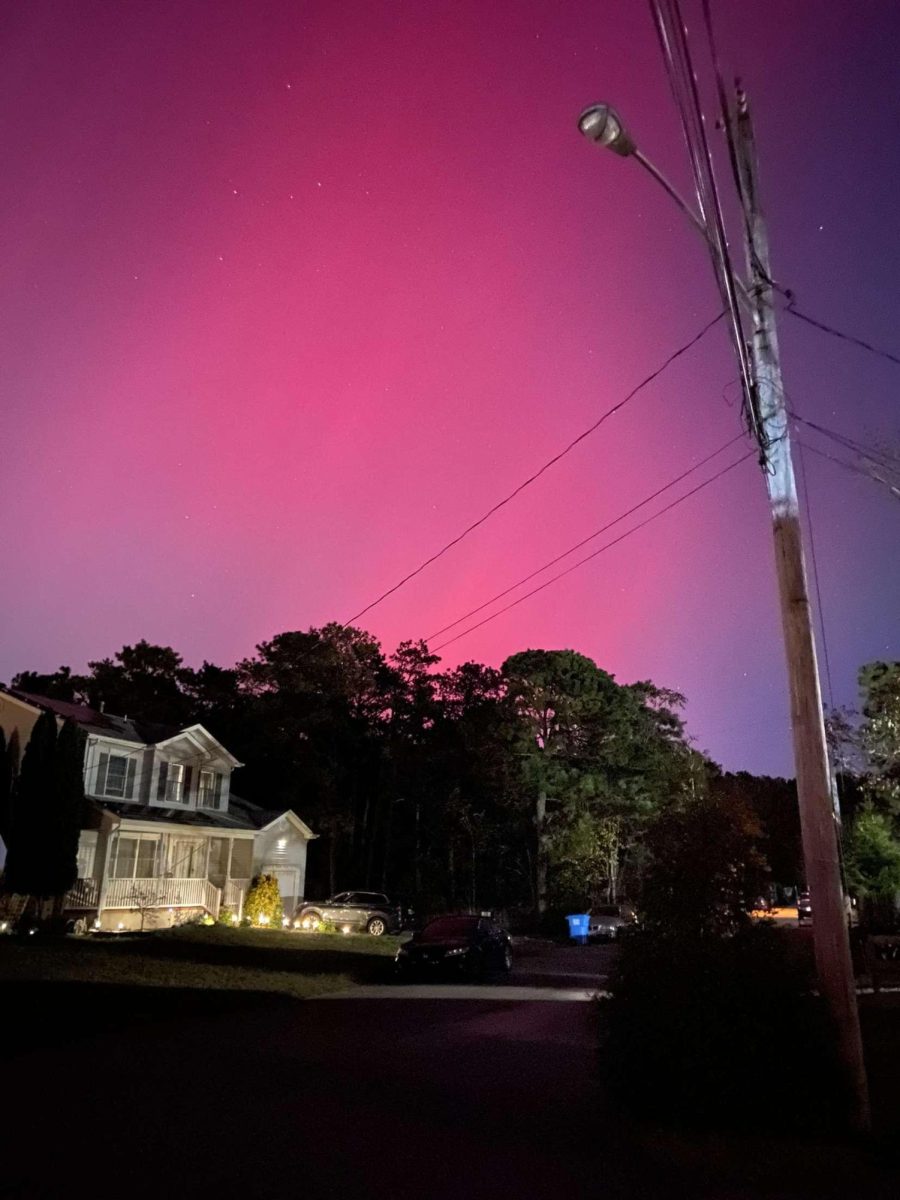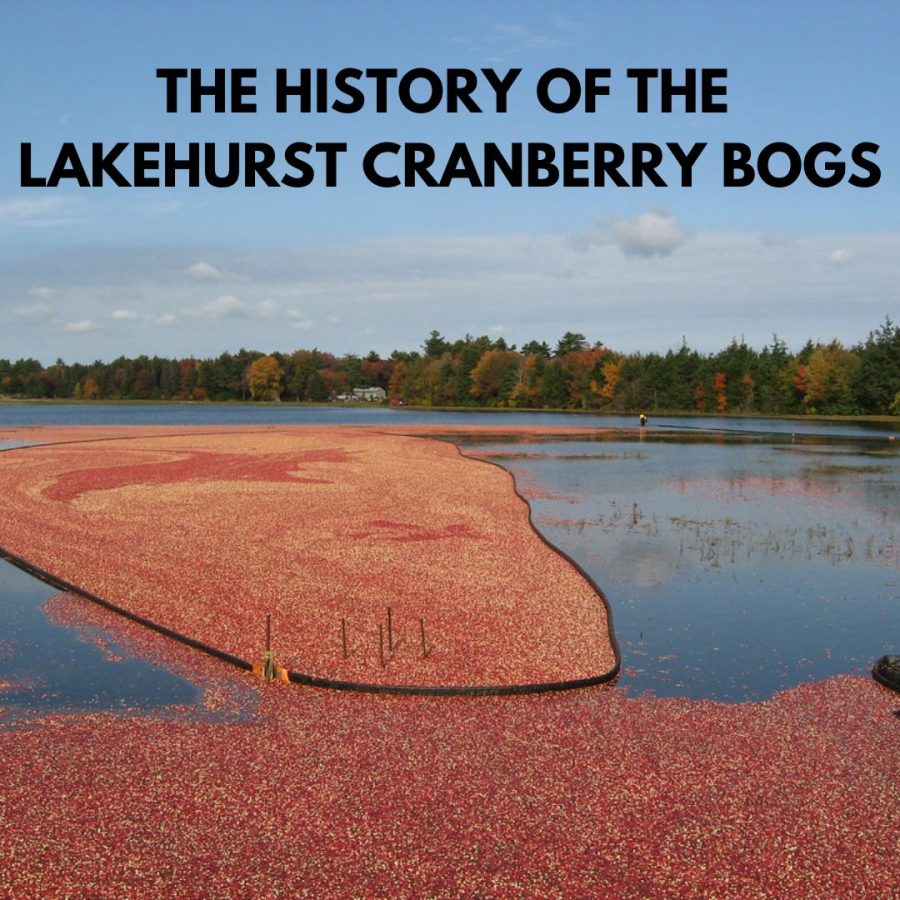The History of The Lakehurst Cranberry Bogs
June 9, 2023
LAKEHURST, NJ- The Pine Barrens are full of often-overlooked historical wonders. As land preservation becomes favorable, the once thriving cranberry bogs of New Jersey are becoming historical landmarks.
Most notable to the Manchester Hawks are the cranberry bogs located adjacent to the Lakehurst Joint Base. Accessed from Proving Ground Road in Lakehurst, New Jersey, the cranberry bogs are a short three-and-a-half miles from the Home of the Hawks.
After the Jimmy’s Waterhole Wildfire that burned through 3,859 acres of Manchester Township in April, the Lakehurst cranberry bogs being among the affected acreage, curiosity has surfaced of the history of the cranberry bogs.
The cranberry bogs are connected to the Manapaqua Branch, which runs upstream from Lakehurst into the Joint Base and downstream from Lakehurst into the Union Branch that runs through Pine Lake. The Union Branch then runs into Toms River then drains out into the Barnegat Bay.
It is reported by the federal government that the Manapaqua Branch has been tested by the United States Geological Survey (USGS) since 1960 and the latest available record for this stream is a site visit dated for August 28, 2018. What happened in Manchester during the 1950s and 1960s that would prompt the federal government to monitor the water body from which residents get their water and cranberries?
The body of water known as Toms River is well known for a crisis that began in 1952. Between the years of 1952 and 1966, the corporation Ciba Geigy dumped chemical waste into Toms River and contaminated groundwater.
The Manapaqua Branch and the Lakehurst Cranberry Bogs are located adjacent to the Lakeurst installation of Joint Base McGuire-Dix-Lakehurst. This location would later be said to pose an environmental threat to the land.
Between those pollution issues and the known corruption of the local municipal government, the possibility of these being the causes for the dormancy of the bogs is probable.
The cranberry bogs in Lakehurst, dating as far back as 1883, were purchased in 1951 by Edward V. Lipman, once the dean of the Rutgers College of Agriculture. Lipman founded Jeffrey’s Branch Cranberry Company in 1950.
In 1944, a federal program began in which migrants were emigrated from other countries to the United States to work for farmers. Migrants from Puerto Rico were relied on by the Lipmans for assistance in keeping a smooth operation running at Jeffrey’s Branch Cranberry Company’s bogs in Lakehurst.
In the 1960s, Lipman’s bog in Lakewood was closed as a result of contamination from a nearby dump. There was also a scare in the ‘80s in which chemicals from JBMDL were suspected to have contaminated the Lakehurst bogs. The Lakewood occurrence happened around the time that the USGS began testing nearby water bodies and testing continued through the other scare.
Lipman passed away in 1998 at 87 years old, survived by his sons Ned and Jeff Lipman. The New Jersey Department of Environmental Protection announced in an October 2003 press release in which they stated their purchase of the cranberry bogs from the Lipmans. The sale of the cranberry bogs was said to be for preservation purposes in honor of Ned and Jeffrey’s father.
The Lakehurst Cranberry Bogs last had a harvest in 2008. Ned and Jeffrey were granted permission to collect the last harvest from the state-owned bogs.
Around this time, the United States Navy began funding a project to plant Atlantic White Cedar trees in the bogs rather than let them remain as standing water and fence them in to prevent deer from feeding on the trees. The Navy put over a quarter-million dollars towards the acquisition of the land by the New Jersey Department of Environmental Protection.
The Attorney General of New Jersey, Gurbir S. Grewal, and Commissioner of the New Jersey Department of Environmental Protection, Catherine R. McCabe, announced that the state of New Jersey was suing the federal government over findings of chemicals in groundwater near federal installations, including JBMDL. Considering the location of the Lakehurst bogs, the possibility is there that the pollution scare in the ‘80s could have been more credible than once thought.
140 years is a large span of time in history. The cranberry bogs in Lakehurst saw their fair share of harvests dating back to 1883 and continue to be preserved in honor of Edward V. Lipman.
Even today, locals venture out to the bogs to take in the scenery. From thriving crops to pollution and even the recent Jimmy’s Waterhole Wildfire, the Lakehurst cranberry bogs continue to live on as a historical landmark with new stories to be told every day.






























